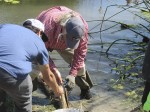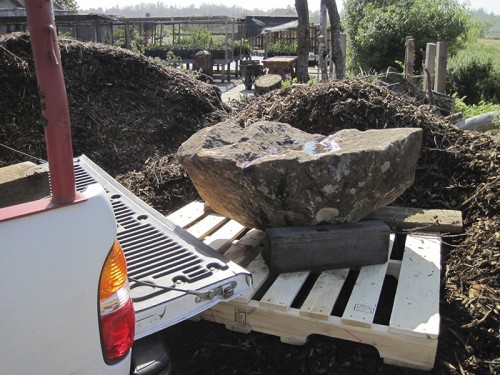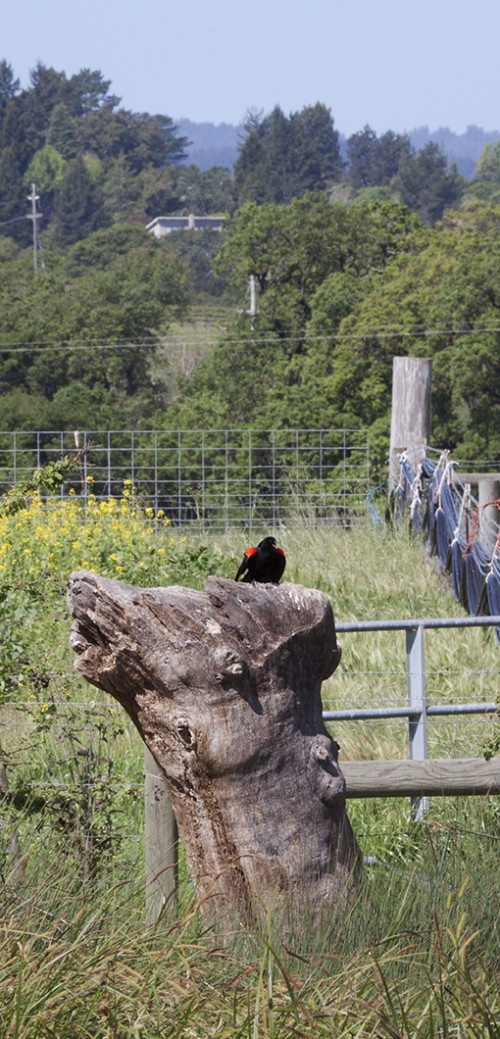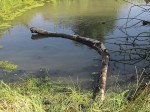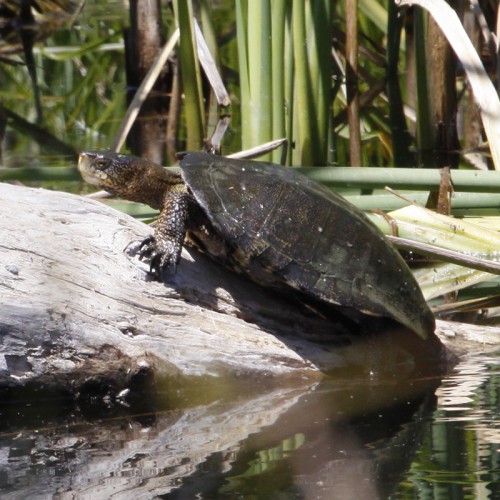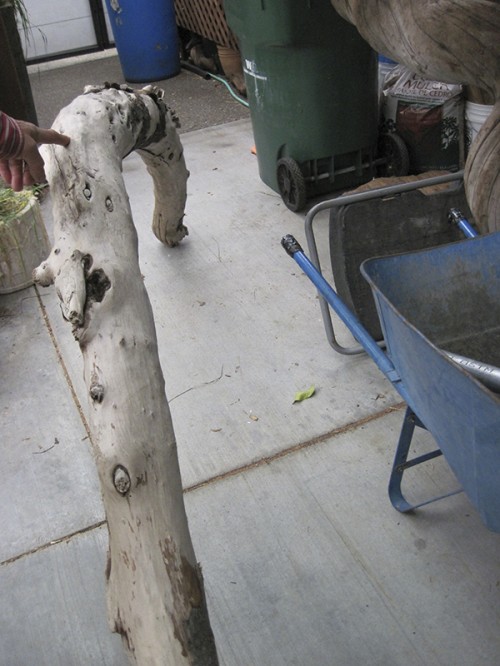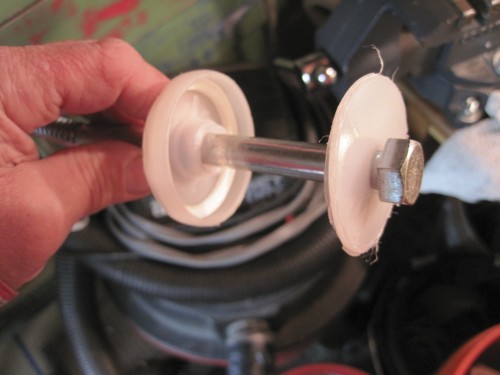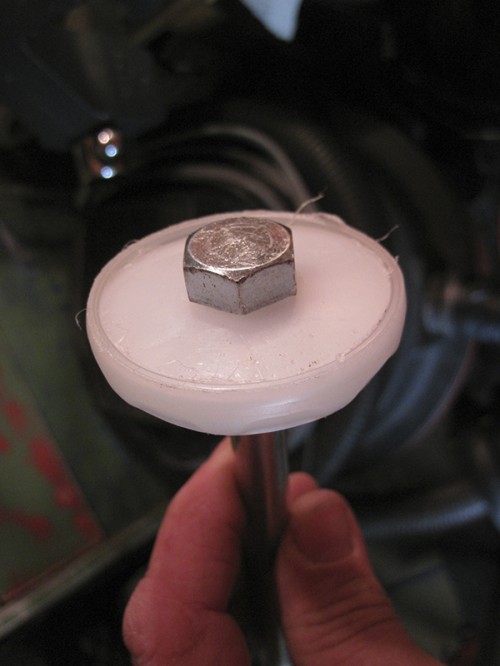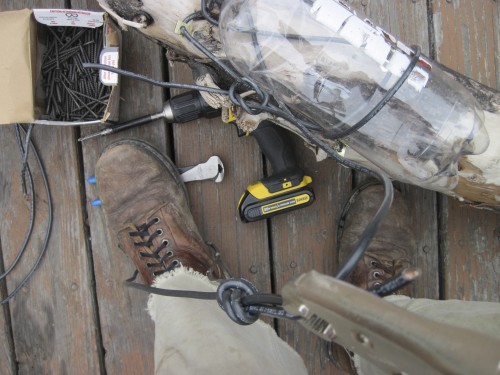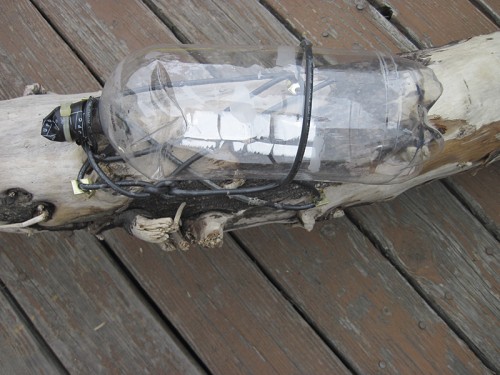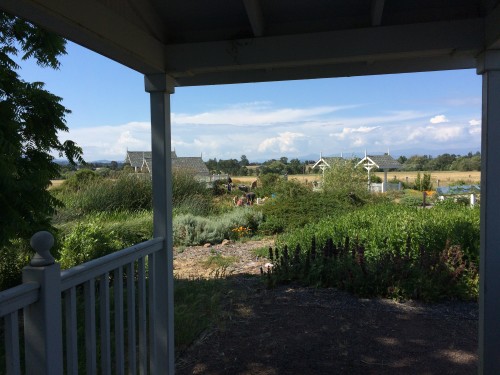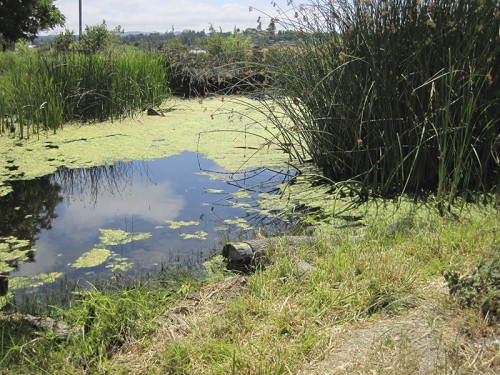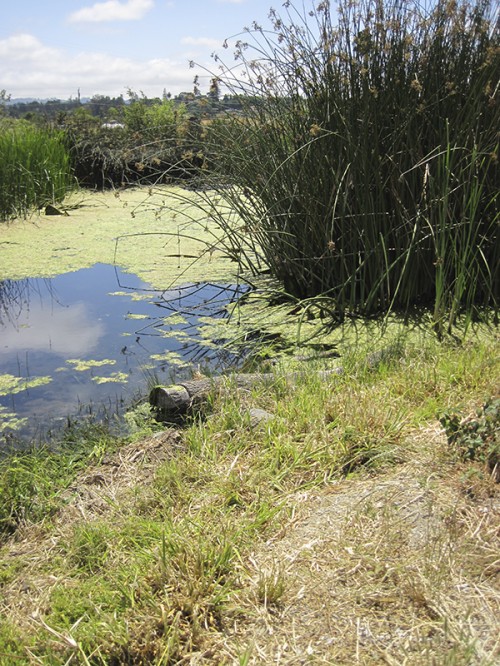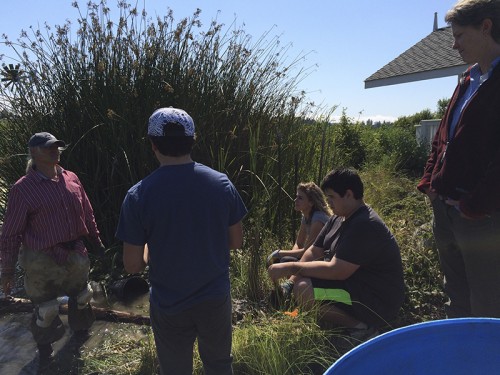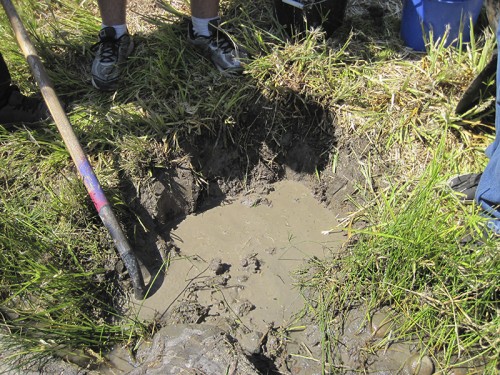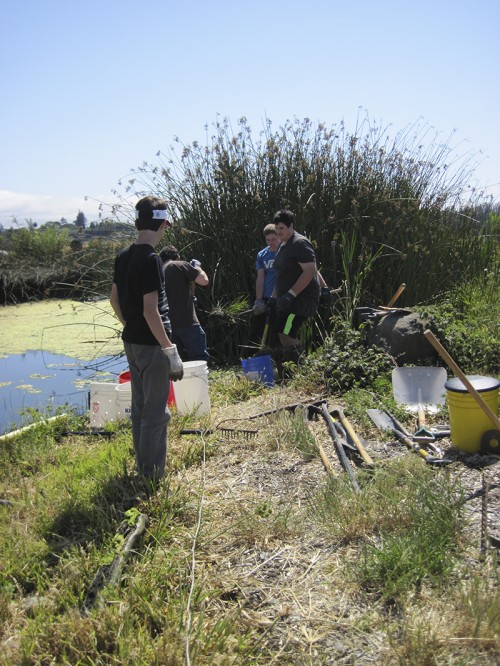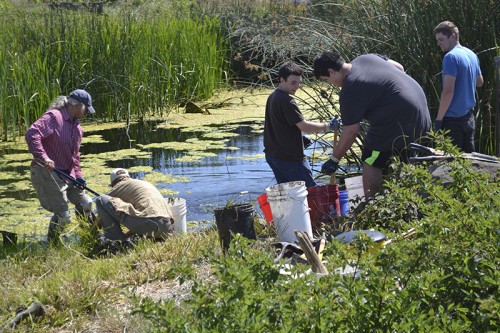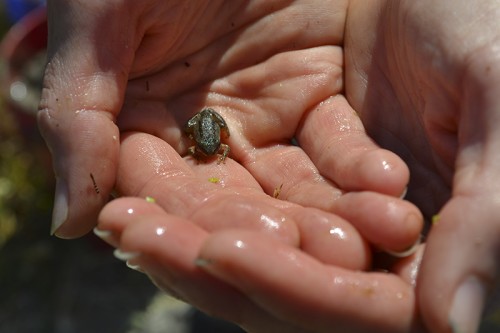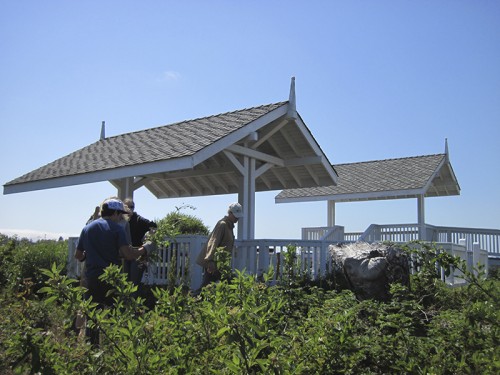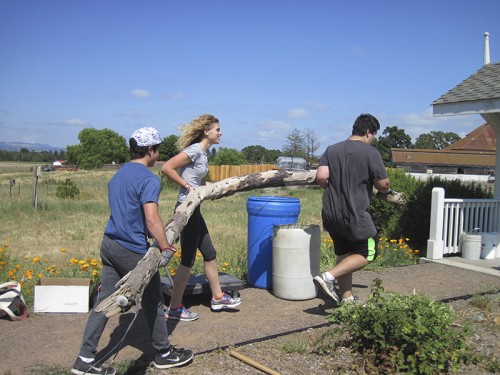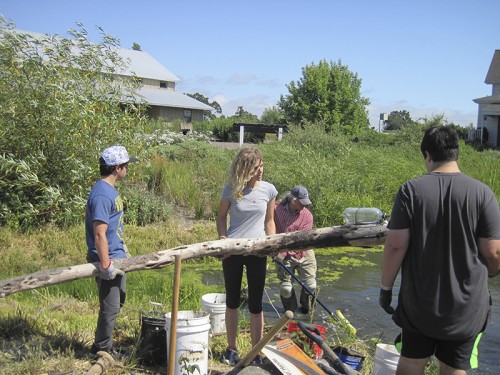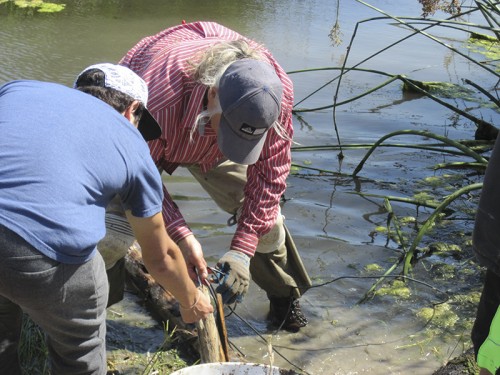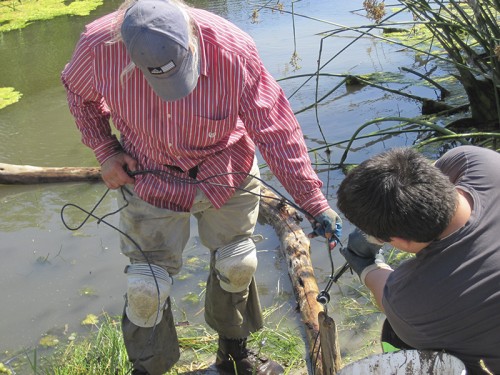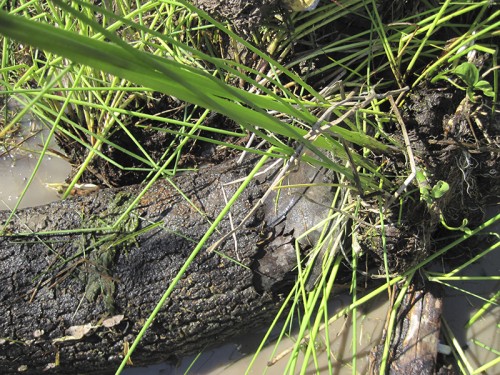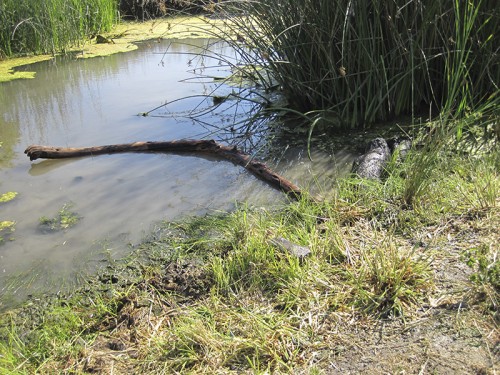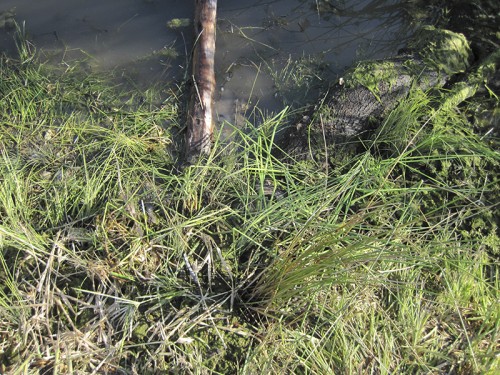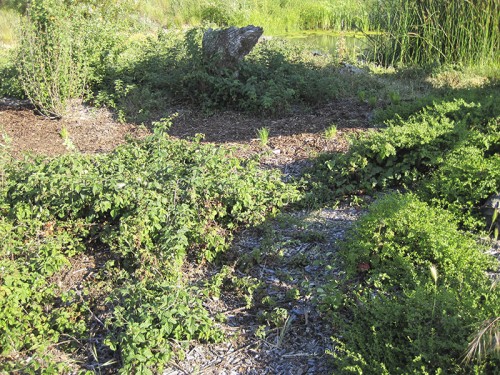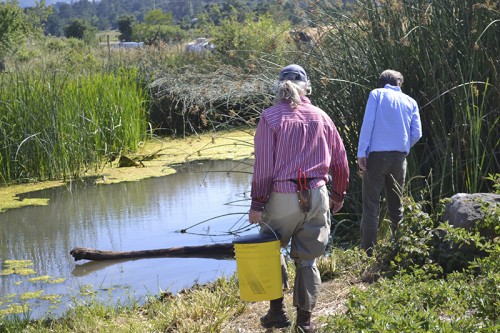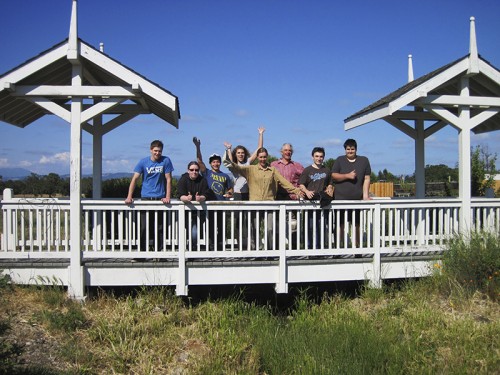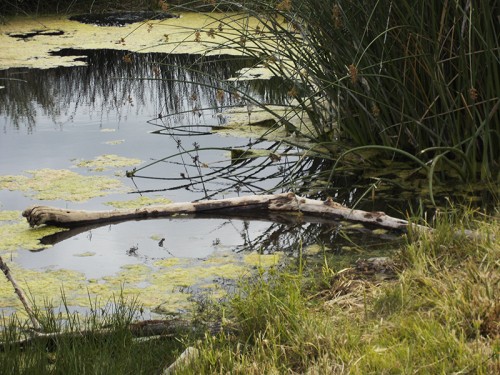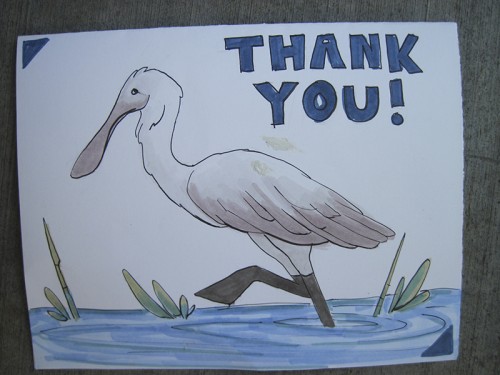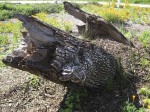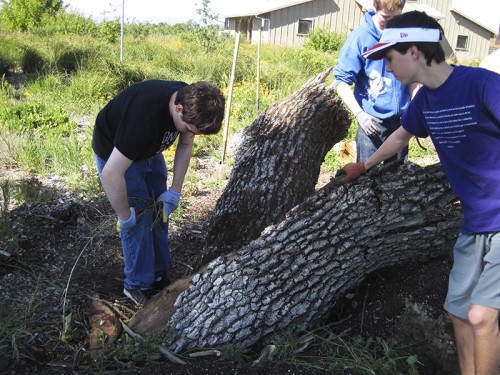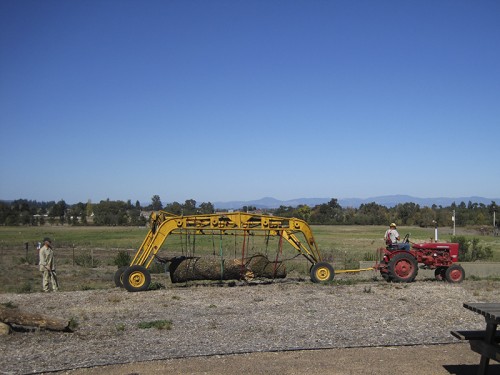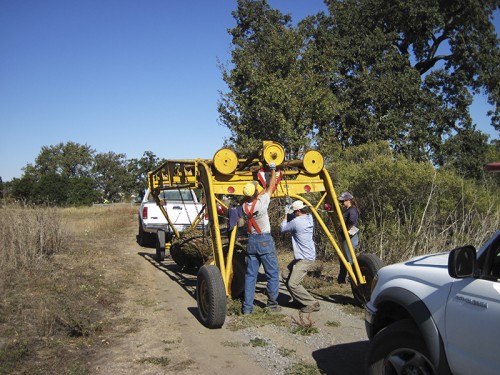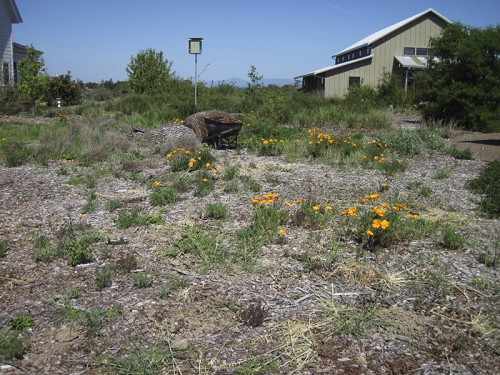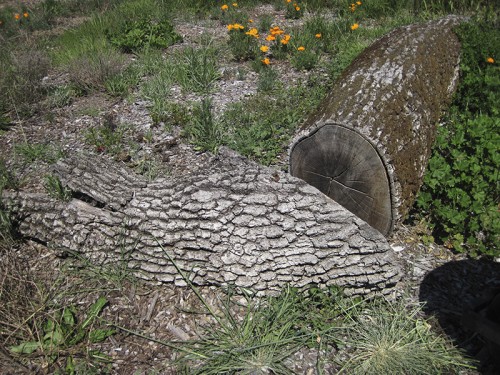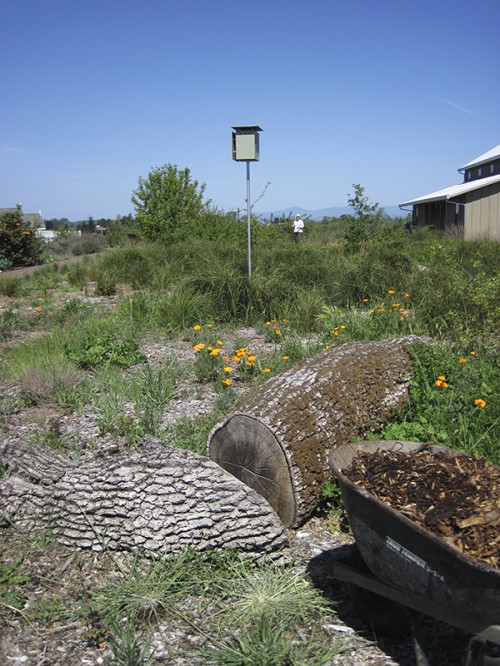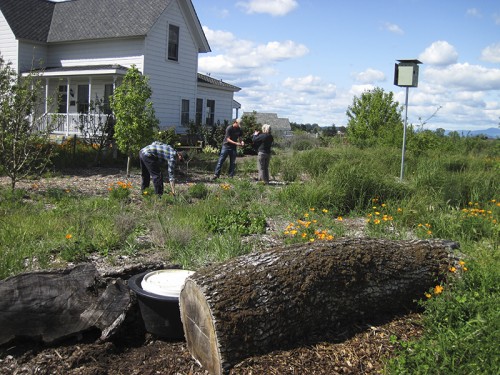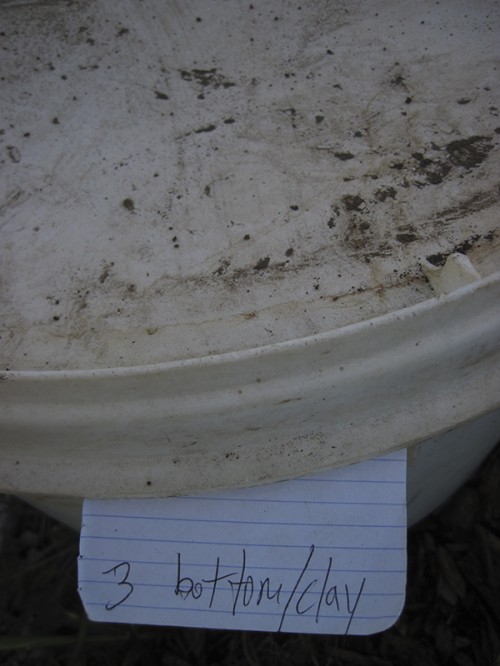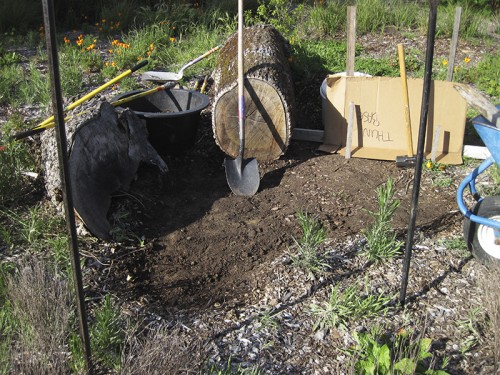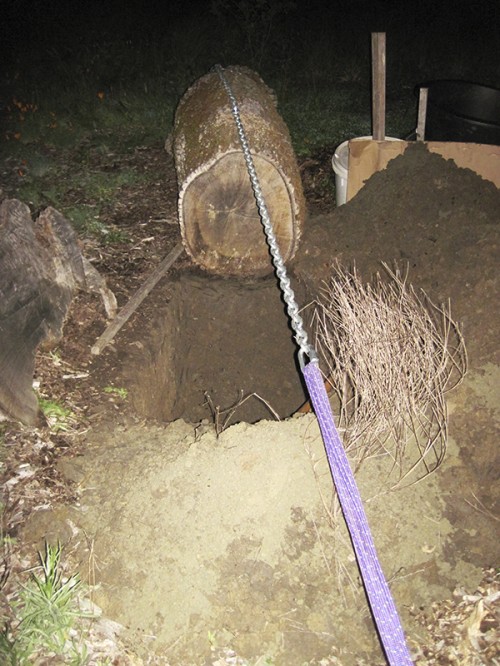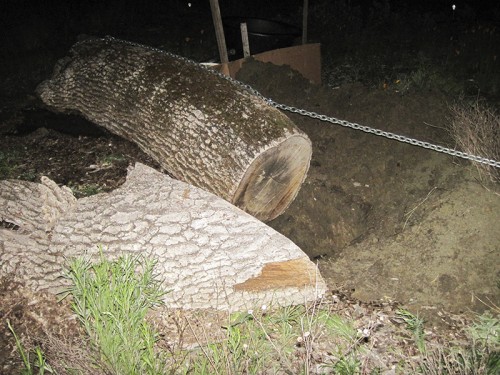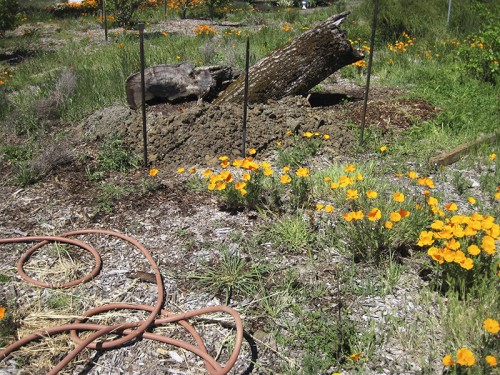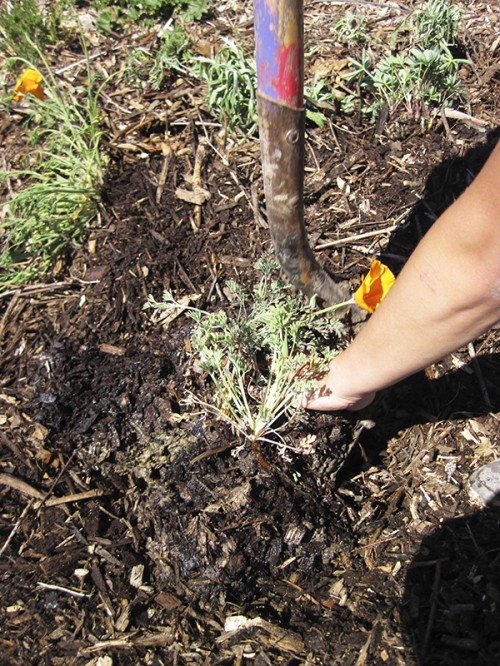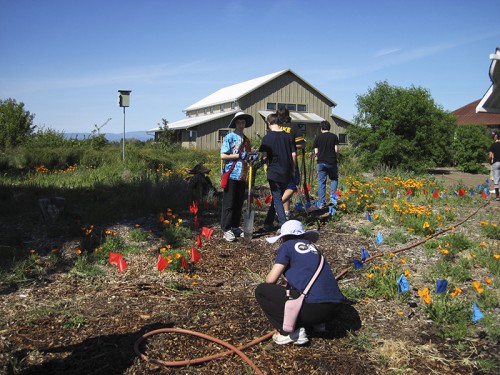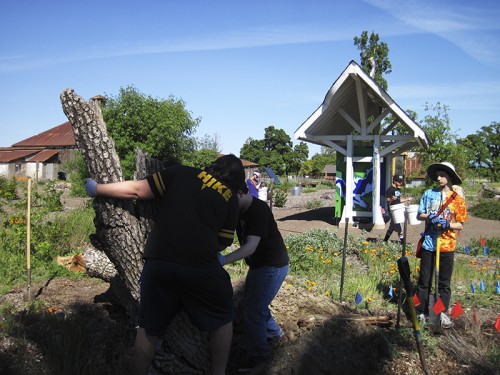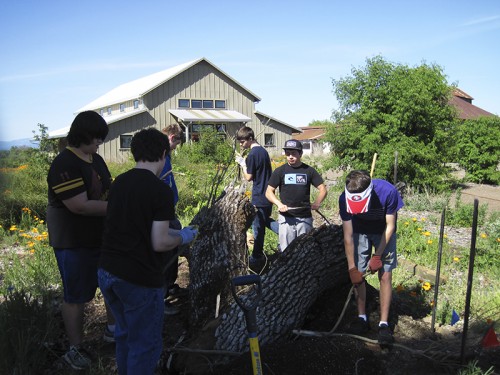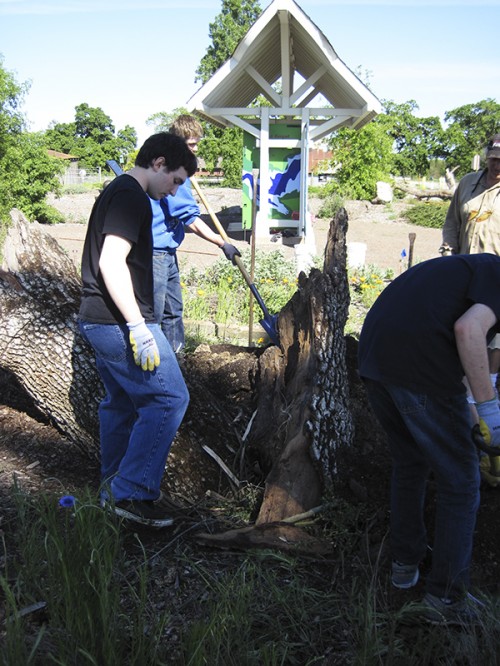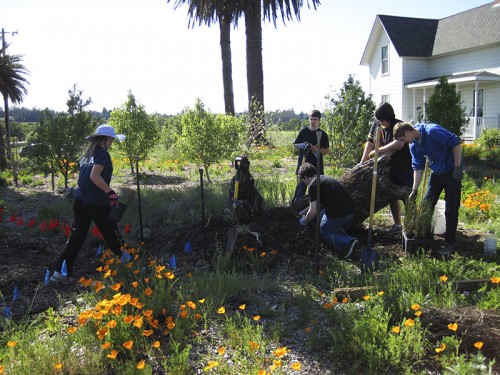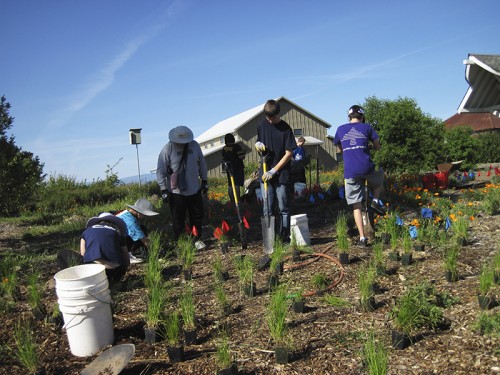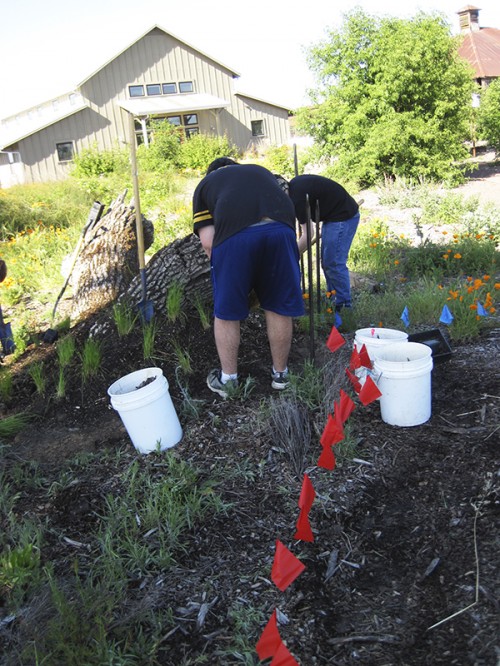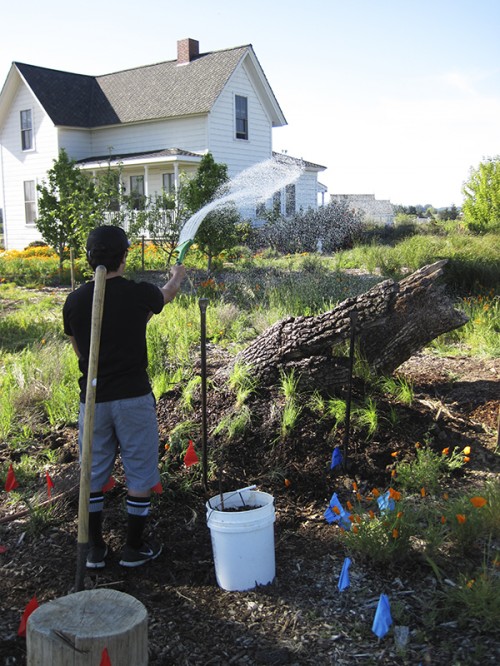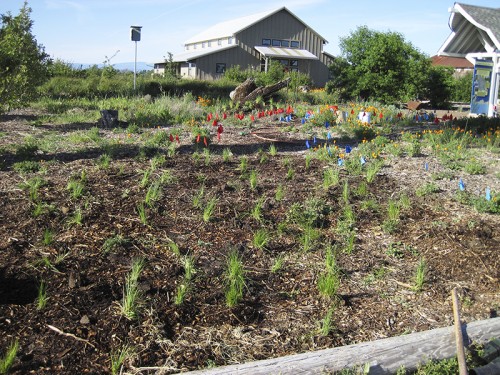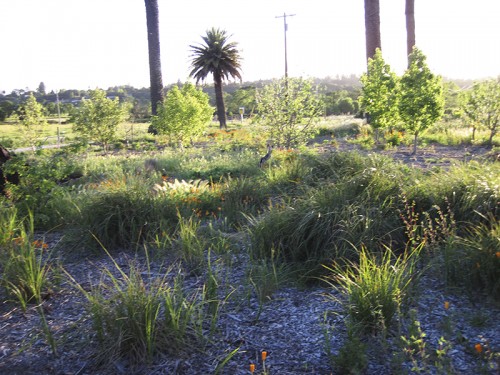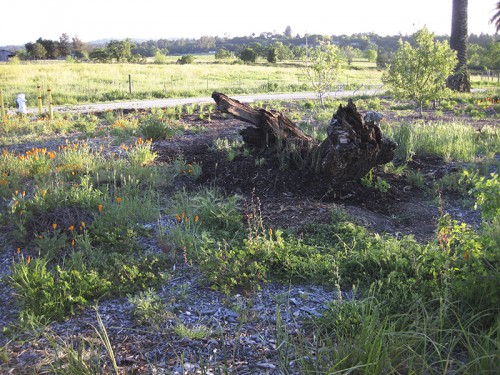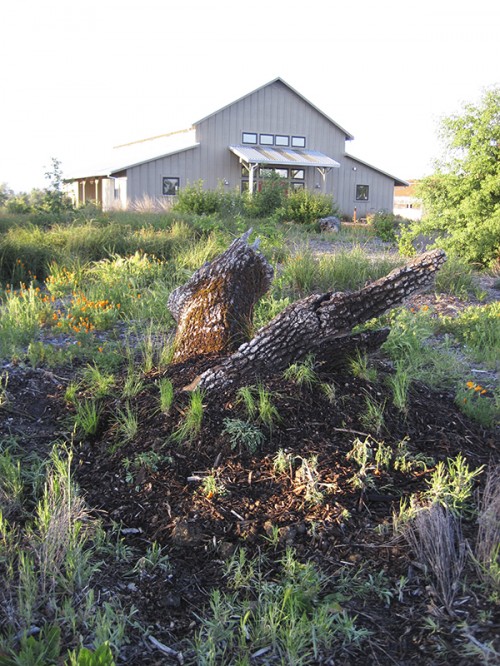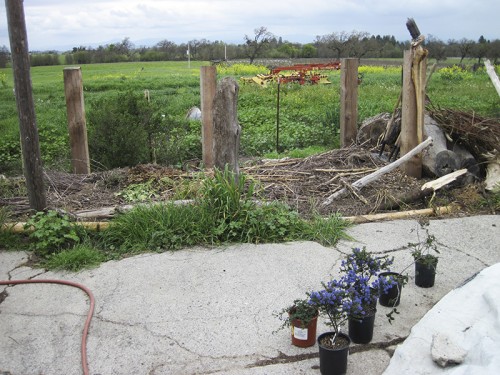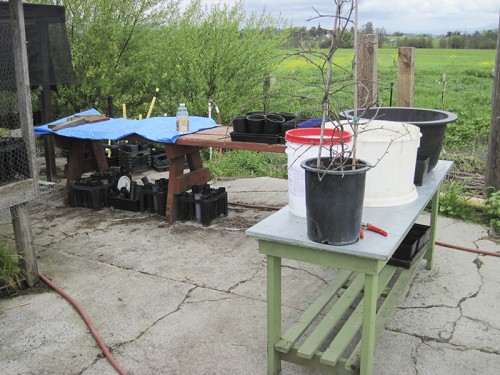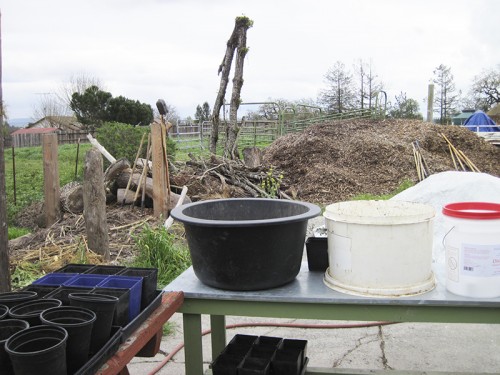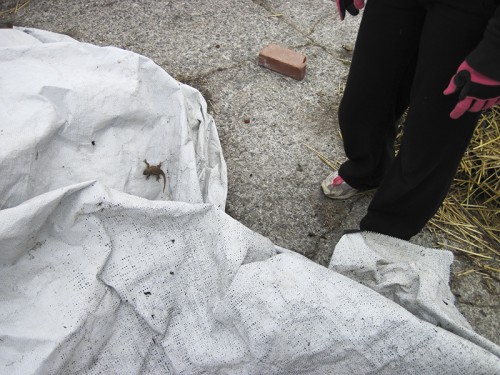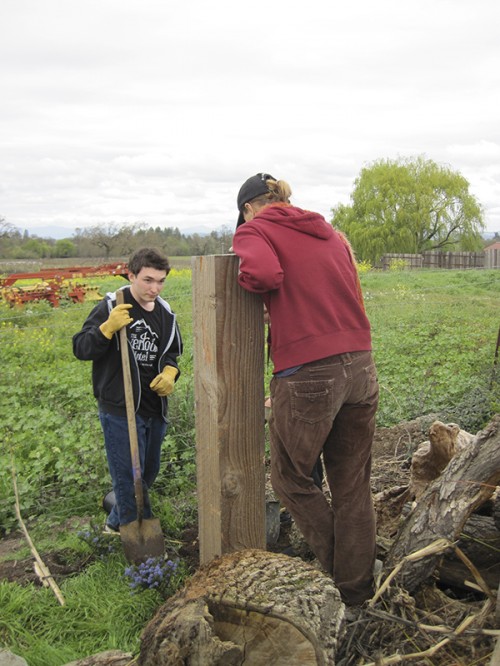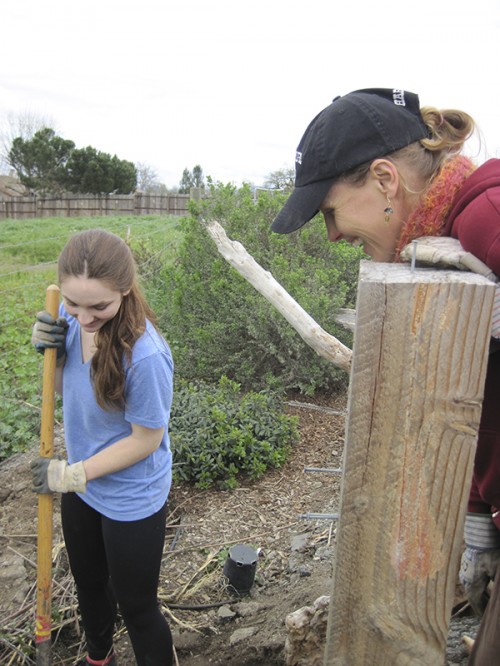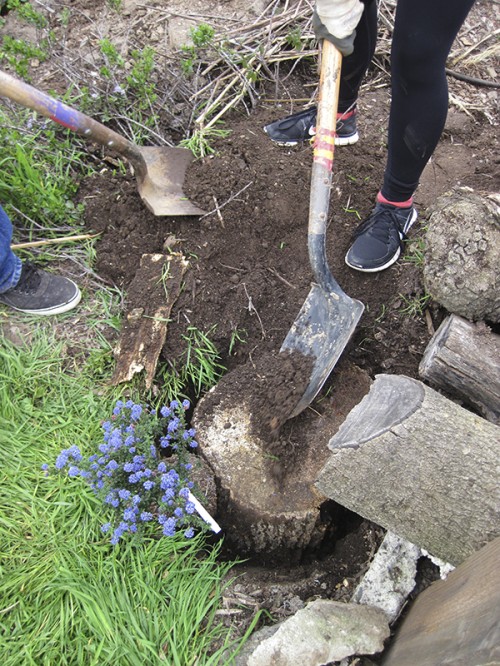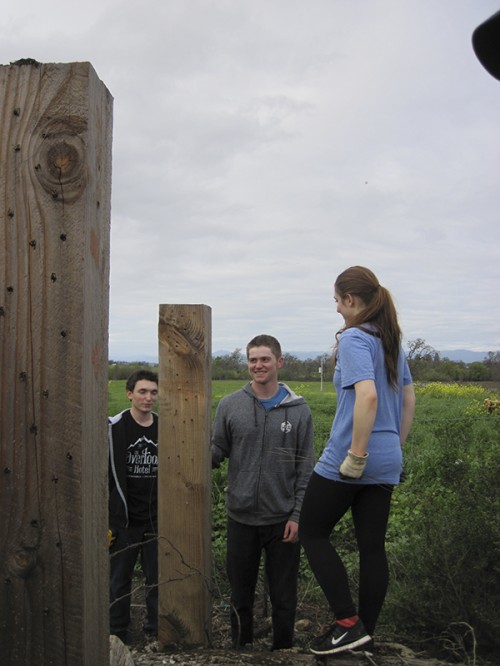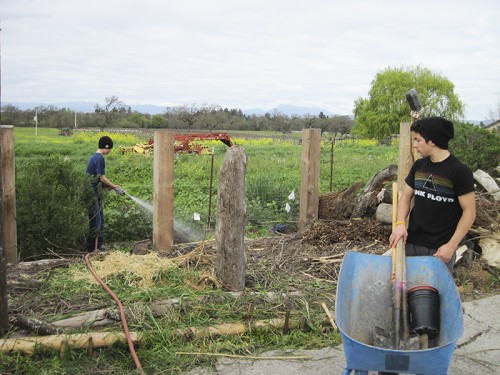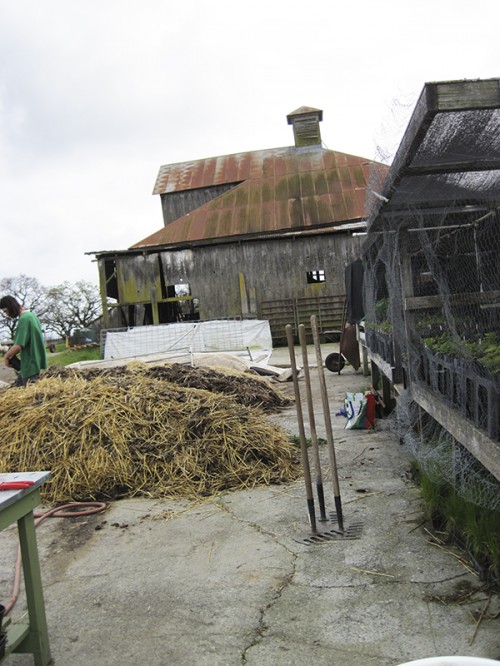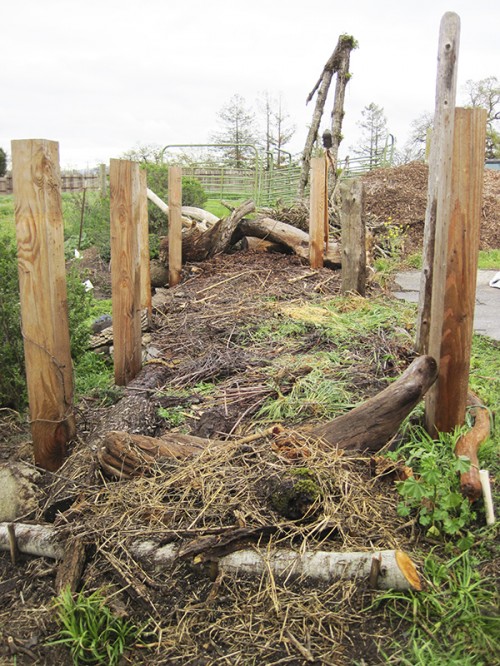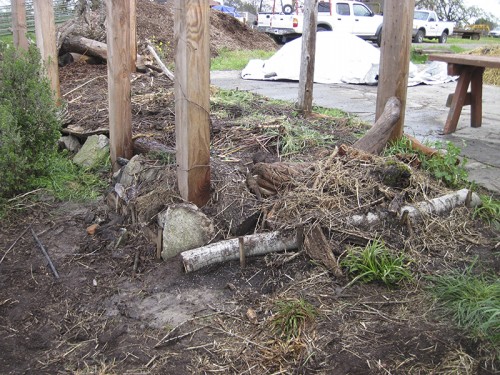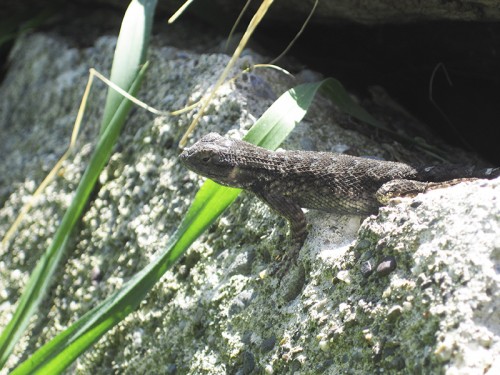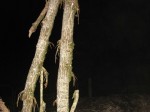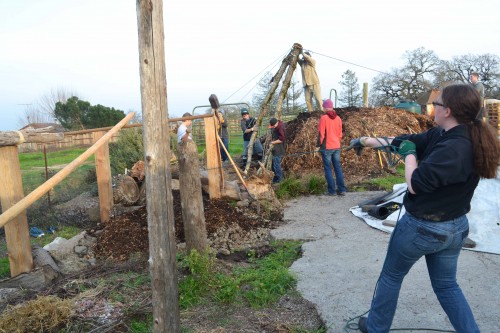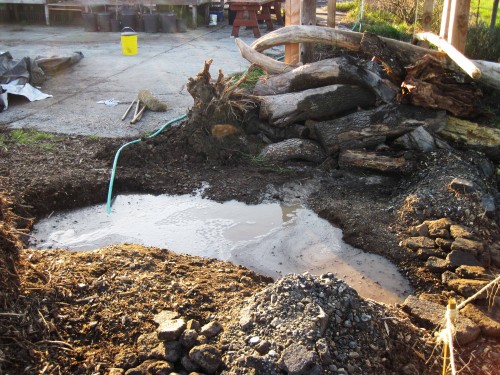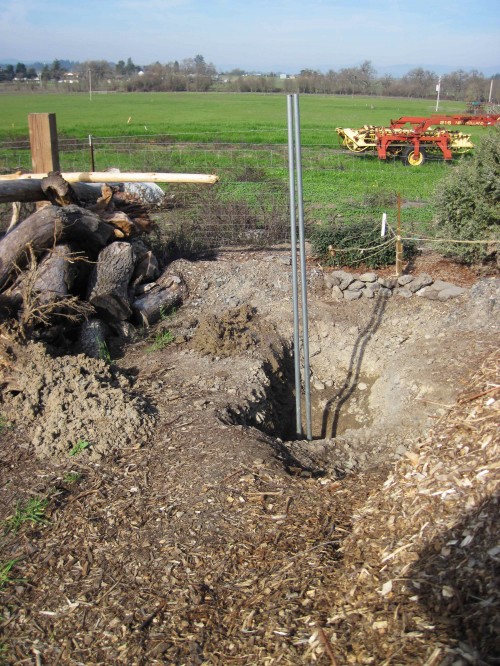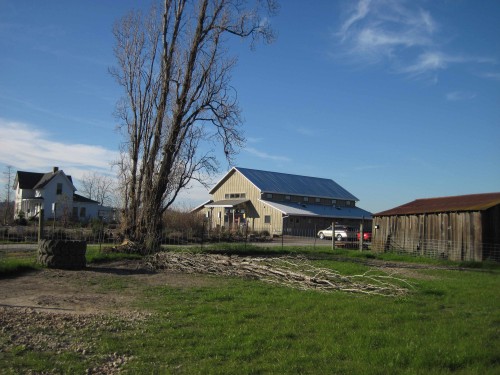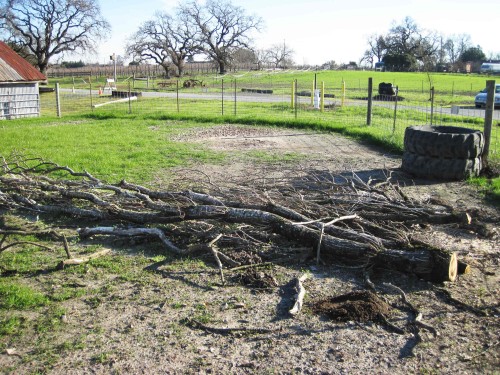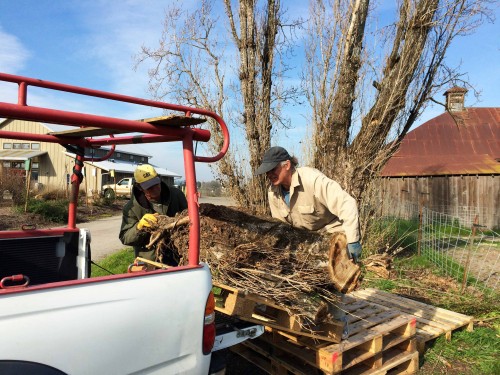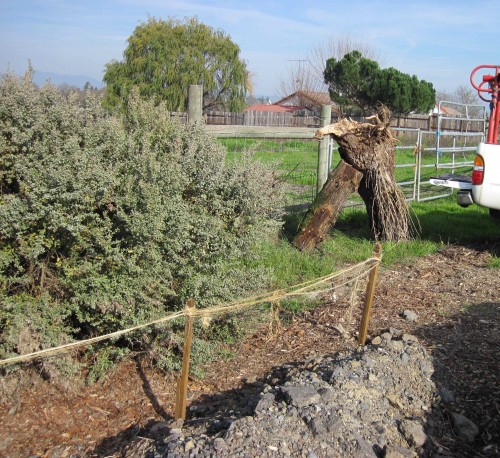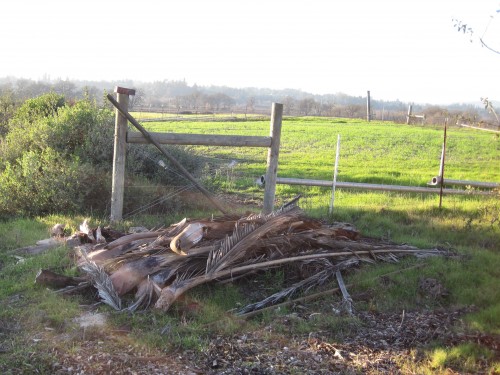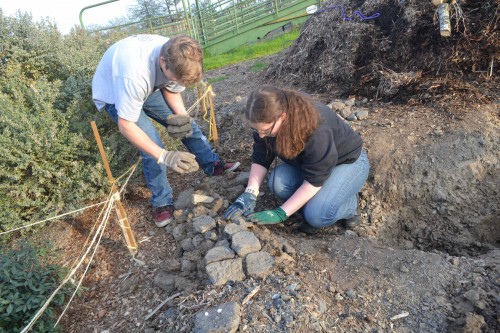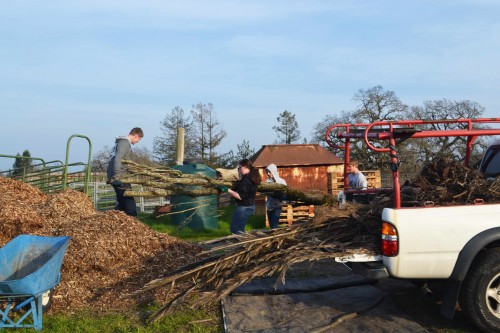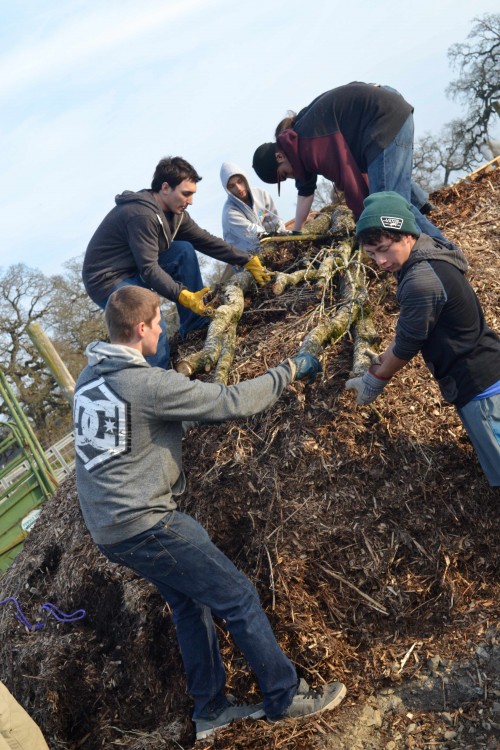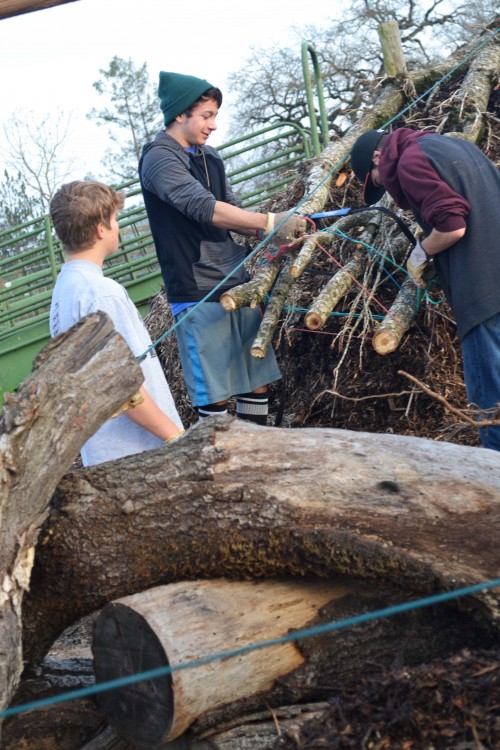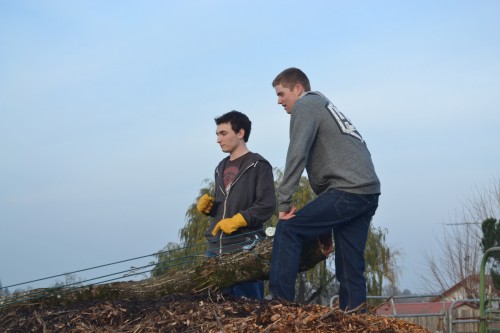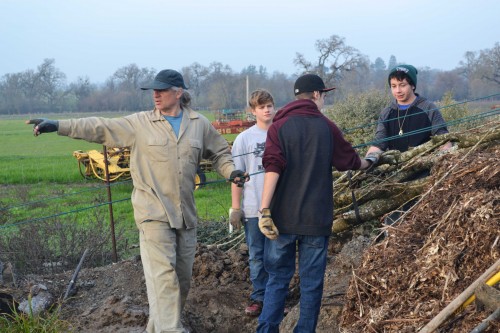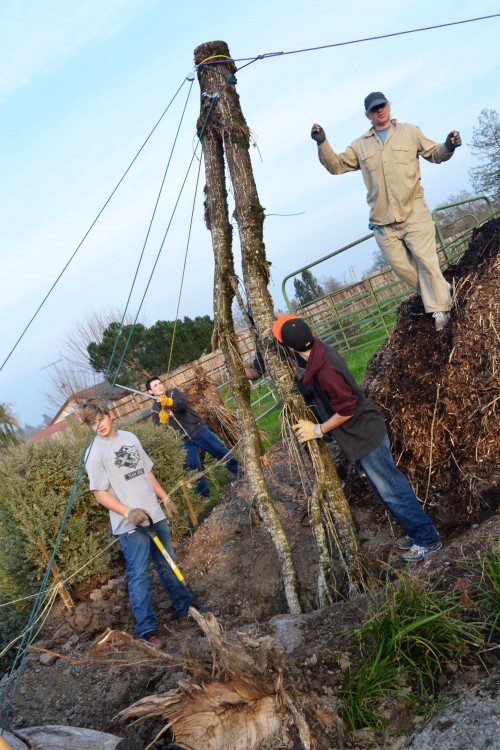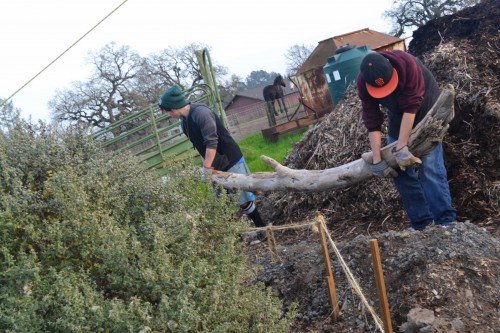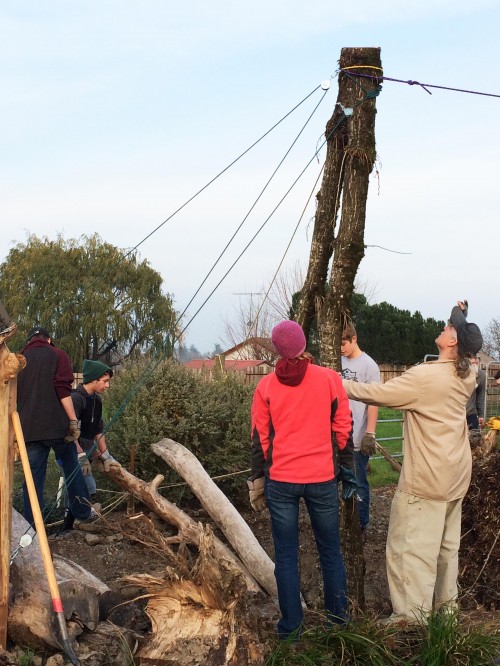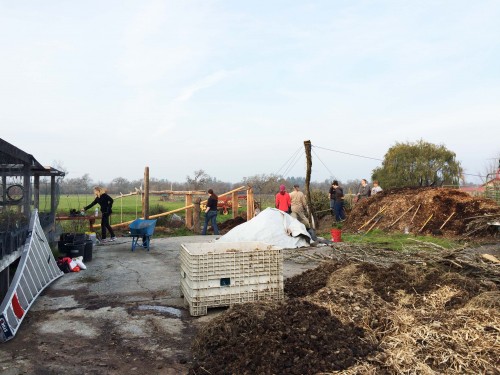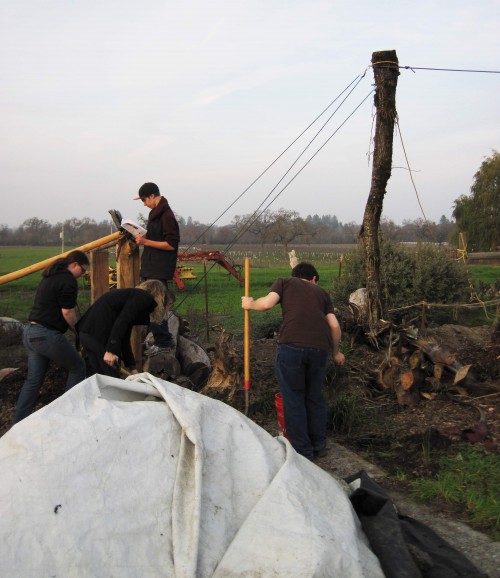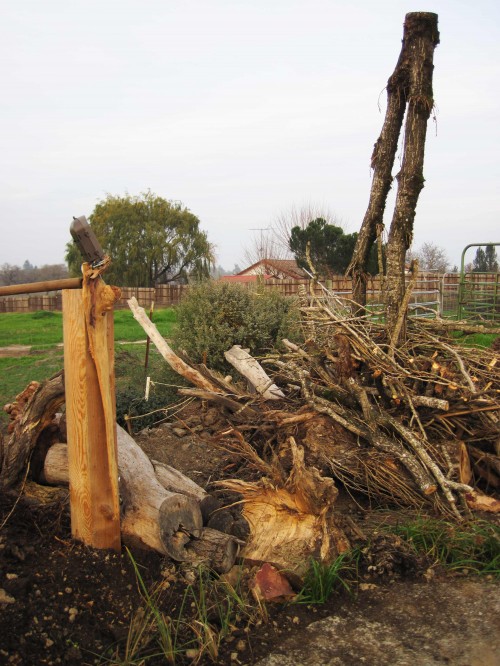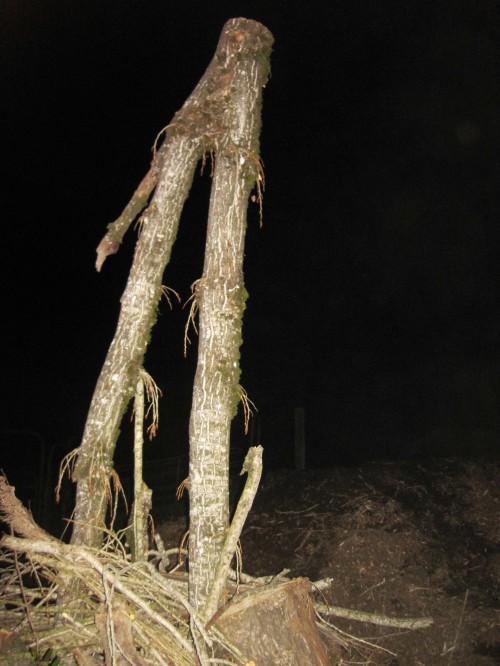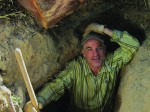
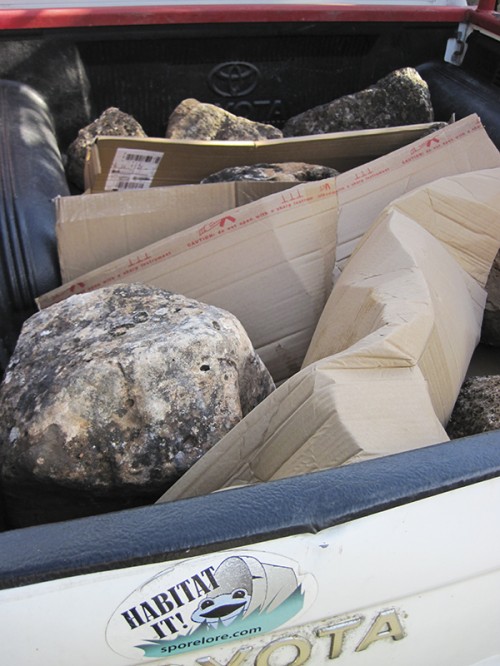 Getting ready for this Sunday’s workshop — Tony’s truck bed load of fieldstone. The fieldstone will be used to create habitat installations during the workshop. Hands on!
Getting ready for this Sunday’s workshop — Tony’s truck bed load of fieldstone. The fieldstone will be used to create habitat installations during the workshop. Hands on!
Some of the fieldstone (above photo) has a lot of holes on its surface. Those stones will be useful in Cricket Corral Splash, Sunday’s habitat installation that will utilize the Laguna Environmental Center’s garden hose drip at the Native Plant Nursery. Every hose must eventually be shut off (very old saying), so when the Nursery’s hose is closed down, the drip will be caught by layers of pourous and water-holding fieldstone. A new Water Park for Cricket Corral Compost‘s critters! Critters will come from far and wide (from the compost and surrounding habitat) for the wet rock, for the moisture, for the pooling drops, for the water! Great place to meet other critters, too; might even find some to eat. It’s habitat! Was a hose shut off and left to drip dry BUT now is also a watering hole for microbes and crawly critters AND a hunting ground for larger animals.
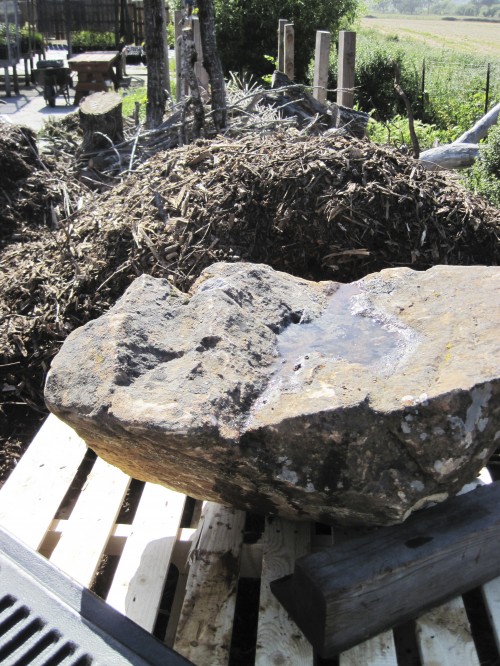 A larger fieldstone will be used in the new Shady Oak Seat wildlife habitat installation. The installation will include planting 2 majestic valley oaks (juvenile trees are in 1-gallon pots), creating a subterranean wildlife habitat using a large oak tree stump and other wood hulks, and using a large rock to create a seat under the soon-to-be shady oak, while creating a habitat under the seat.
A larger fieldstone will be used in the new Shady Oak Seat wildlife habitat installation. The installation will include planting 2 majestic valley oaks (juvenile trees are in 1-gallon pots), creating a subterranean wildlife habitat using a large oak tree stump and other wood hulks, and using a large rock to create a seat under the soon-to-be shady oak, while creating a habitat under the seat.
From the Laguna Foundation’s Events page:
About my workshop at the LEC on Sunday morning:
How to Create Residential Wildlife Habitat
Hands-on Workshop with Tony McGuigan
Sunday, July 12, 10:00am-4:00pm
Location: Heron Hall, Laguna Environmental Center, 900 Sanford Road, Santa Rosa, CA 95401
$55 ($45 for Laguna Foundation members). Suitable for 14 years and up (teens must be accompanied by an adult). Pre-registration required.
Join us for this informative and fun-filled hands-on workshop with habitat landscaper, Tony McGuigan. Learn how to “think like a plant,” “think like a critter,” and how to creatively foster wildlife habitat and thriving biodiversity in your own yard. Tony will begin the morning with a presentation inside Heron Hall (without Powerpoint!), then move outdoors for a tour of the habitat projects already installed in the landscape. Then we will dig in to create several new wildlife habitats at the Laguna Environmental Center! This workshop will include light to strenuous landscaping work in the sun, although there will be tasks for every ability. Local materials will be used including native plants, local rock and soil, tree debris, and driftwood. With a strong emphasis on creating natural-looking beauty and aesthetics in the landscape, this workshop will be practical and inspirational.
Tony McGuigan is a Learning Laguna Docent and creates wildlife habitat in residential and educational settings. He is author of the book Habitat It And They Will Come. His Spore Lore blog discusses Wildlife Habitat Installation and Outdoor Classroom projects. Tony (a Registered Nurse) is currently writing about the health benefits of working with soil and loving Life! See Tony’s monthly project work at the Laguna Environmental Center with Orchard View high school biology students and their latest project, “Turtle Pond Float.”
About my talk at the LEC on Saturday afternoon:
Habitat It And They Will Come
Presentation with Tony McGuigan
Saturday, July 11, 3:00-4:30pm
Location: Heron Hall, Laguna Environmental Center, 900 Sanford Road, Santa Rosa, CA 95401
$10 at the door. No RSVP necessary.
Join us for this entertaining and informative talk about the why, who, and fun-how of creating animal habitats in residential gardens. Learn about some of the challenges wildlife face in suburbia and solutions to create wildlife-rich neighborhoods. Discover what wildlife might be present in our gardens and practical means to attract those critters.
Tony is owner of Spore Lore and the author of Habitat It And They Will Come. His education includes Biology at Long Island University and certificates in Permaculture and Sustainable Landscaping. His passions include being a Learning Laguna Docent, a Wildlife Habitat Instructor for Orchard View School’s high school Biology outdoor hands-on class at the Laguna Environmental Center, a habitat landscaper, and doing creative wildlife gardening at home.
See you this weekend! Habitat it!
Tony

